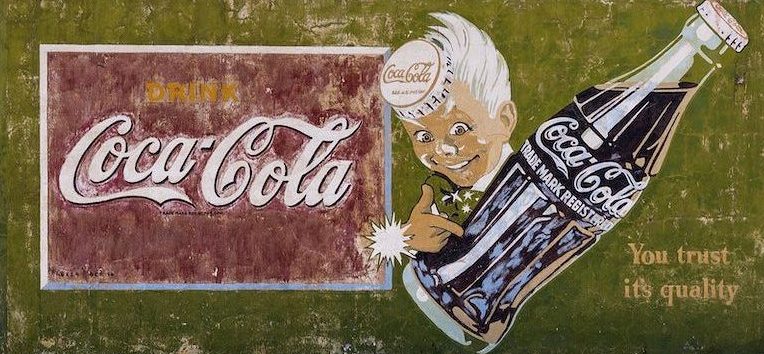Corporations and Creativity: Coca Cola’s Masterpiece Campaign
Coca-Cola’s Masterpiece campaign was launched on March 6 2023 and uses famous figures in the art world to create its meaning. This campaign aims to innovate Coca-Cola’s relevance as a global brand through its use of digital art and its appeal to the disillusioned younger generations. Ultimately, its goal is to boost sales and also cement its influence on the consumer market.
Masterpiece exemplifies the hybrid nature of combining artwork and technology to create an intriguing campaign. The ad video Masterpiece was inspired by Andy Warhol’s 1962 Coca-cola bottle, and we see references to multiple big art names throughout the video. For example, we see Edward Munch’s 1895 painting ‘Scream’, Van Gogh’s painting ‘Bedroom in Arles’, and S Tejada’s 2020 painting ‘Natural Encounters’. Coca-Cola merges these groundbreaking pieces with innovative technology via Blitsworks and Tafi. Blitsworks is a strategic consulting firm that offers the most transparent, cooperative, and practical creative methods available at the speed of technological innovation. Tafi offers 3D and Web3 solutions for content development.
The campaign received a staggering 721,000 views on YouTube and over 11,000 likes. It was also promoted on a wide range of platforms, including the Coca-Cola website, and Academy films, and was made by Henry Schofield. Although it was created by Coca-Cola’s UK division, it reached fans all over Europe, Asia, North and South America. It demonstrates the worldwide reception of Coca-Cola and the digital art platforms it uses for this advert. It also illustrates how much bigger the Coca-Cola company has gotten since 2016, as its previous hit campaign ‘Taste the Feeling’ reached 457,000 views and Masterpiece doubled this figure within a month.
The paintings “Natural Encounters”, “You Can’t Curse Me”, and “Girl with the Pearl Earring” display the future the art industry with a society moving towards a digital world.
The Masterpiece campaign was released amid cultural conversations about AI following the launch of ChatGPT in November 2022 and DAll.E in January 2021. These launches have raised many questions about creativity in the digital age, particularly about the extent to which advances in the tech industry have overshadowed developments in art, music, and literature. Coca-Cola alludes to this and implies that its products can reignite the subconscious desire for creative expression. By using contemporary digital art programs and traditional paintings, Coca-Cola ties together past and present methods of artistry. Thus, they establish themselves as a brand that values both conventional mediums and new transformations in society.
The Coca-Cola Masterpiece campaign was mainly targeted at youth in the Western world, which correlates with the aims of their previous campaigns. Simplelearn states that “The company targets young people between 10 and 35”. This campaign references the younger generation’s reliance on technology through the use of digital platforms, and the age demographic of 10-35 aligns almost perfectly with the people who utilize Web3 software. According to a survey conducted by Third Academy, most people using Web3 are “typically men 18-45 who live in North America, Europe, and emerging markets”. Therefore, Coca-Cola’s usage of the Western world’s new technology displays how it embraces the dominant cultural influences of 2023.
Coca-Cola is well-known for its successful marketing initiatives, which are mentioned as instances of excellent brand promotion by experts. The Share a Coke campaign (2011), Taste the Feeling campaign (2016), and The World’s Cup (2014) all promote inclusivity, interconnectedness, and sharing ‘moments of happiness’ with others. Echoes of these ideas can be seen throughout Coca-Cola’s Masterpiece campaign, with the focus on the inspiration and creativity which the product evokes as opposed to the product itself. The Masterpiece campaign, on the other hand, dives into history to foster harmony. This contrasts with their previous confinement to the present moment.
The Masterpiece campaign raises many questions about the direction that Coca-Cola wants to go in the future. By integrating their status as a digital brand by implementing blockchain technology and AI, it merges with the youth’s profound admiration for technology. The visually striking images of the paintings ‘Natural Encounters’, ‘You Can’t Curse Me’, and ‘Girl with the Pearl Earring’ display the future we will see in the art industry with a society moving towards a digital world. In our view, this campaign raises two questions around Coca-Cola’s interaction with contemporary culture: how will Coca-Cola continue to move towards a creative field, and will their sales accelerate and expand during this digital revolution?

Comments (1)
The campen is best wishes